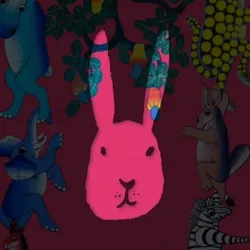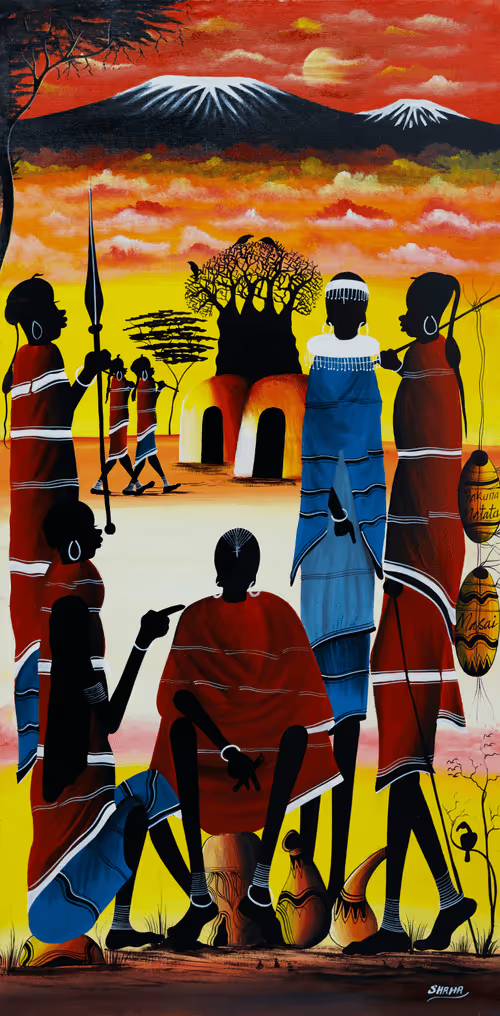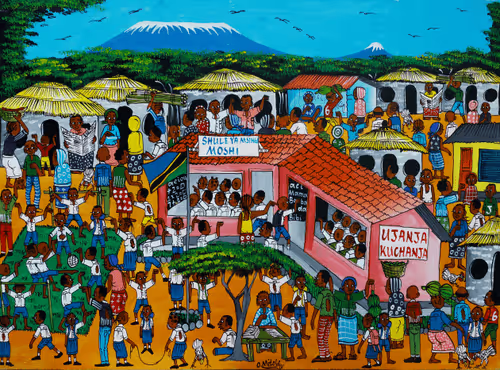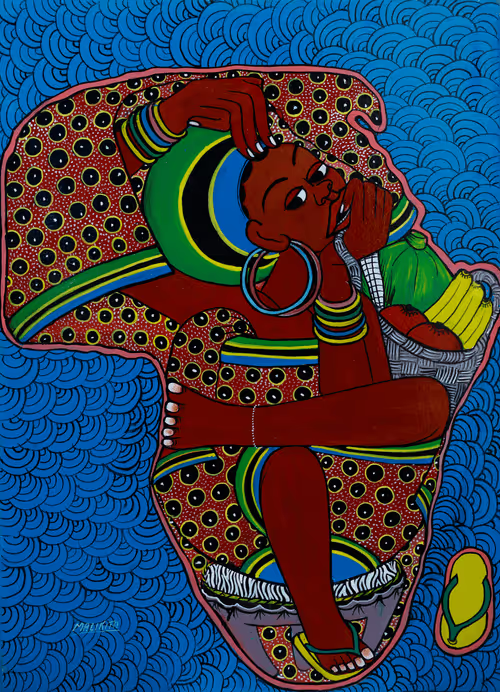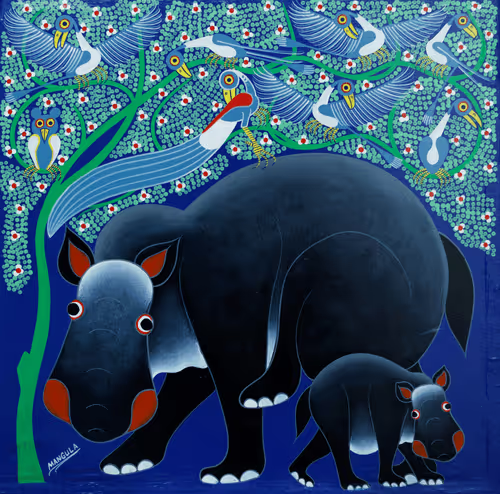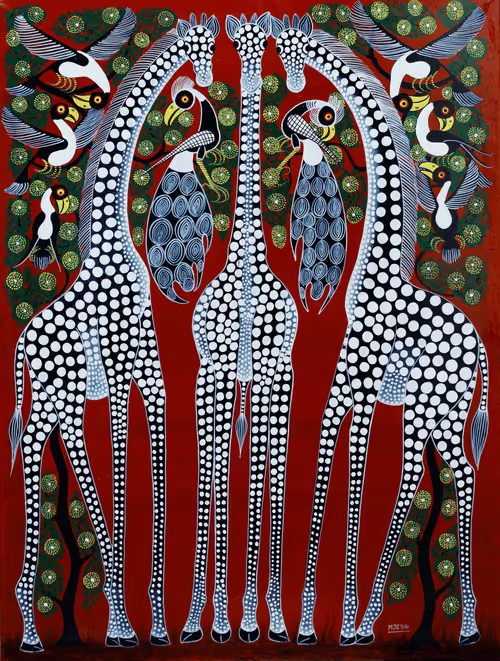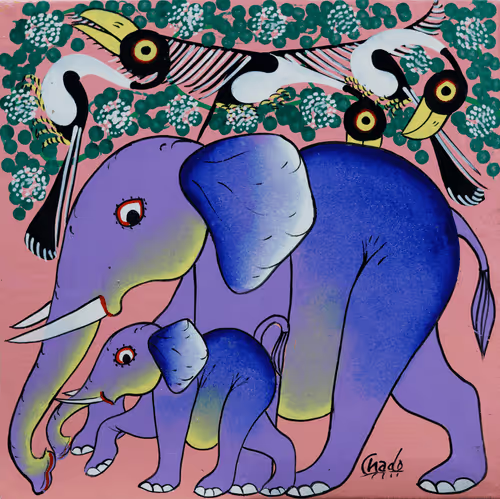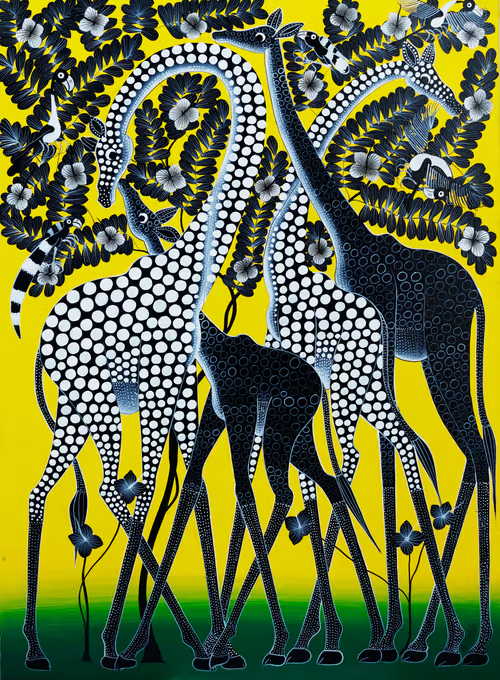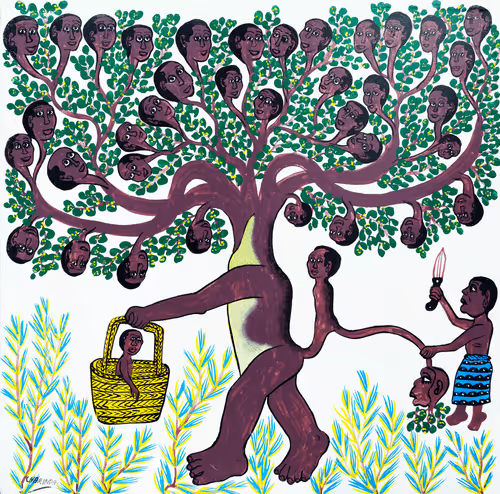From a creative co-op in Tanzania emerges “TingaTinga: Chapter II” a collection of six new artists breathing fresh life into old traditions. Renowned for their vivid colors, compelling characters, and captivating narratives, the TingaTinga artistic movement takes inspiration from visionary founder Edward Saidi TingaTinga's work in the 1960s. In this new collection, OrangeHare is proud to carry the torch of this distinctly East African art form into the digital arena.
Proceeds of this collection go to help fund the continuous operation of TingaTinga Arts Collective in Tanzania.
With each purchase, you contribute your own voice to this movement’s global narrative, and connect yourself to a Tanzanian tradition that remains unbroken six decades after it was founded. See FAQs for Details!
The TingaTinga art movement traces its roots back to Edward Saidi TingaTinga, a visionary artist from Tanzania whose unpretentious paintings and positive outlook on life sparked an artistic resurgence that reshaped the creation of East African art for a global audience.
Having no artistic education and even less material to work with, Edward TingaTinga used whatever he could get his hands on, including low-cost materials such as Masonite squares, recycled ceramic fragments, and bicycle paint on wood. With seemingly simple sceneries and bold designs, Edward TingaTinga’s style reflected his lack of formal schooling- but it also reflected something much deeper: A burning passion for storytelling.
Contained within his playful landscapes of the African savannah and the animals and people that inhabited it, TingaTinga tapped into a deeper sense of the storytelling elements unique to the region- and instilled a sense of cultural pride and joy in all those who saw it. Before long, his colorful characters and “found canvas” creations gained a local following that allowed him to quit his job and pursue his craft as a full-time artist, and eventually start a movement.
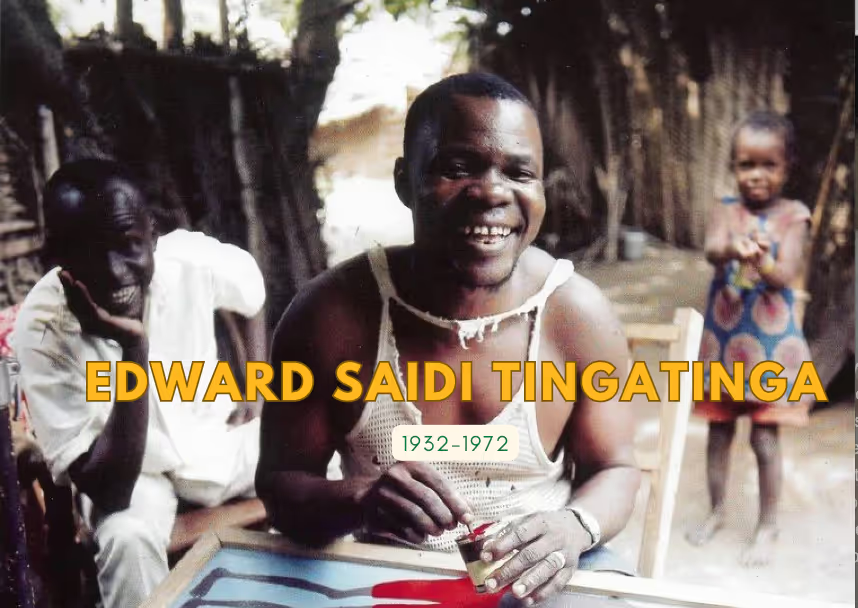
Although Edward TingaTinga’s life was tragically cut short due to a violent altercation with the police in 1972, his legacy lives on in the movement he helped create. Drawing from rich cultural and historical legacies, TingaTinga’s artwork and positive outlook on life has inspired countless generations of Tanzanian artists to pick up painting as a form of expression, even if they lack the “formal resources” to do so. Today, numerous variations of the style called “TingaTinga” can be found throughout East Africa and beyond, including this drop curated by OrangeHare, the first of its kind in Web3.

Although Edward TingaTinga’s life was tragically cut short due to a violent altercation with the police in 1972, his legacy lives on in the movement he helped create. Drawing from rich cultural and historical legacies, TingaTinga’s artwork and positive outlook on life has inspired countless generations of Tanzanian artists to pick up painting as a form of expression, even if they lack the “formal resources” to do so. Today, numerous variations of the style called “TingaTinga” can be found throughout East Africa and beyond, including this drop curated by OrangeHare, the first of its kind in Web3.
"This picture is called ‘The Antelope Pose and shows a mother antelope resting with her son after various rounds in the forest. In this scene the mother imparts wisdom to her offspring about the dangers posed by other animals. Mindful of their safety, she keeps a watchful eye against predators such as lions, leopards, and even people. In fact, we all enjoy eating Antelope because the meat is very sweet. I often draw Antelopes because I believe they are very nice and gentle, but the meaning of this picture is mother and son."
“This drawing is inspired by a story my grandfather told about life in the jungle.
In the beginning, the animals lived in fear, worried about potential attacks by enemies without their knowledge. So, they decided to organize a competition where the winner would be responsible for long-range security. Meanwhile, the lion was given the leadership of the wilderness kingdom, the rhinoceros became the guard of the forest to prevent fires, and the hippopotamus was assigned to guard along the rivers and reservoirs.
For long-range surveillance, they needed someone to watch for enemies from afar and alert others. They organized a competition to reach the top of the cashew tree, stay higher, arrive on time, and provide timely information. The competition included Elephants, Zebras, Leopards, Rabbits, Boko, Antelopes, and Monkeys. Many animals failed to reach the top due to their weight and inability to climb quickly. The monkey won and was given the task.
To this day, monkeys remain the animals that can reach the top of a large tree and provide information on destructive enemies of the forests”
“Socialism as we understand it is a concept established long ago in the era of our ancestors, aiming to foster unity and cooperation. In the past, our ancestors formed socialist villages to encourage everyone to collaborate in various ways. The essence is that whenever a particular community aimed to achieve something, they united to reach their goals. The late Charinda, when painting this picture, reflected on the life he once lived in the village. He decided to create this artwork to commemorate the Socialism of his village, which embodies the profound truth that "UNITY IS STRENGTH AND SEPARATION IS WEAK.”
“This artwork represents a crow family, commonly found in Tanzania. The image vividly captures the authentic daily lives of crows. At day's end, they gather for family meetings, showcasing their strong bonds. Remarkably, when one crow passes away, the others remain in the vicinity for the entire day, demonstrating a deep sense of connection. Mirroring human routines, these birds wake early to search for food, convene in the evening, and retire at night. The portrayal reflects the parallel lives between these crows and humans, emphasizing the familial and communal aspects of their existence.”
My painting is inspired by the life of a Maasai family who are polygamous and yet live a communal life with love and cooperation. For the Maasai it is common for men to marry more than one wife. In this painting, the head of the family has several wives but decides to go out with two of them and some children. Vibrant and colorful, their clothing reflects the simplicity of the Maasai lifestyle, where possessions, even in clothing, are minimal. Overall, my drawing seeks to capture the rich traditions and customs that define Maasai life.
Kikukuana are garments that showcase the unique cultural identity of Tanzania and parts of South Africa, serving as a source of pride for the whole African continent. Embracing the beauty of traditional clothing through a distinct TingaTinga interpretation, Malikita captures the essence of Tanzanian heritage. Celebrated for their cultural significance, these garments blend tradition and artistry, resonating with audiences locally and globally.
'Family of Birds Ⅱ' by Ramadhani Mangula
Random draw of the final 5 holders who made the most purchases to receive 1 NFT gift. (AirDrop)
(※ This work of art is not for sale and will ONLY be made available for this airdrop!)
